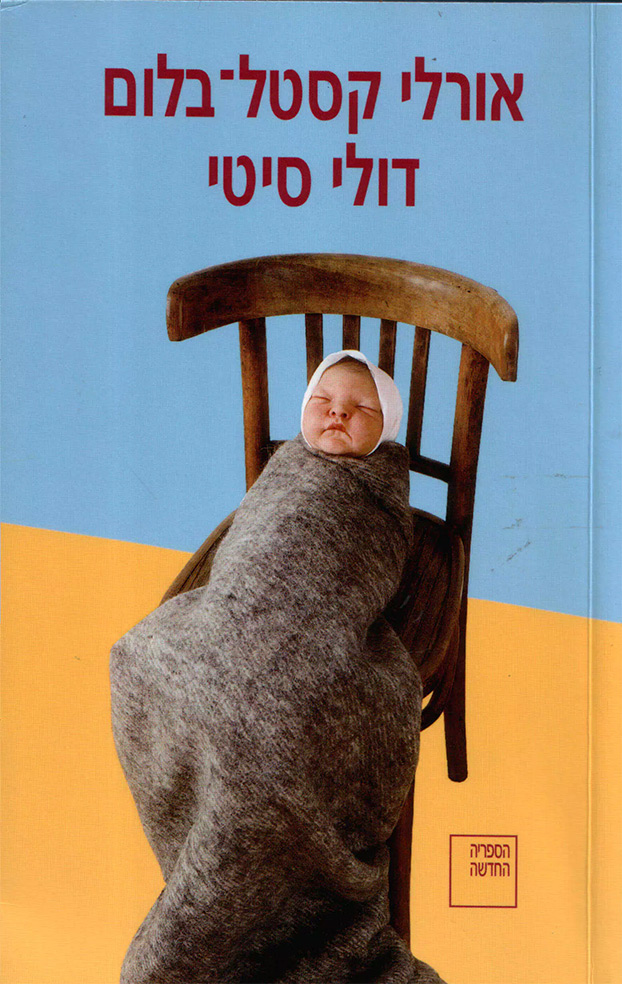
Dolly City
Dolly, the novel’s heroine, is afflicted with a disease that does not appear in the medical textbooks: she is a chronic sufferer from attacks of infinite possibilities. The novel is propelled by the author’s wild imagination let loose, but what seems at first to be breathtaking madness turns out to contain pure logic. On one level, it is the story of the young physician, Dolly, whose home houses a laboratory for operating on animals. She adopts a hungry, blue baby boy whom she found in a bag by the side of the road. Worry and revulsion, rage and boundless love are all part of Dolly’s complex attitude toward the boy, a kind of postmodern variation on the Jewish mother. Afraid that the child will contract diseases, she transplants various organs into his body and gives him every possible inoculation. To make sure that she does not lose him she grafts him onto her back, but when she gets tired of this subjugation she tries to drown him.
Mother-son relations are intriguingly illuminated in the second level of the text, also implying the complex bonds with the Land of Israel. Using a scalpel, Dolly, the physician, carves a map of biblical Israel on her son’s back, just one of a series of images through which the author probes Israeli reality. As in her earlier fiction, Castel-Bloom writes about Tel Aviv, its squalor, its vitality, its ecological anarchy, and about the violence of modern urban life. Through her pungent style, her scenes of extraordinary plasticity, with hard, sharp wording and plenty of black humor, Castel-Bloom evokes the anxiety of a self-destructive world.
Dolly City has been included in the UNESCO Collection of Representative Works.


- Languages
-
Dutch, English, French, German, Greek, Italian, Serbian, Spanish, Swedish
-
Dutch
Amsterdam, Wereldbibliotheek, 1993 -
French
Arles, Actes Sud, 1993;
pback: Babel, 2008 -
German
Reinbeck, Rowohlt, 1995; pback: 2018 -
English
London, Loki Books, 1997;
Champaign, IL, Dalkey Archive, 2010 -
Swedish
Stockholm, Ordfront, 1998 -
Greek
Athens, Kastaniotis, 2000 -
Italian
Viterbo, Stampa Alternativa, 2008 -
Spanish
Mexico, Turner, 2015 -
Serbian
Belgrade, Clio, 2015
-
| Title | Dolly City |
|---|---|
| Writer's Last Name | Castel-Bloom |
| Writer's First Name | Orly |
| Genre | Fiction |
| Publisher (Hebrew) | Hakibbutz Hameuchad |
| No. Pages | 123pp. |
| Book title - Hebrew (phonetic) | Dolly City |
-
“ Kafka in Tel Aviv… From the first page, Dolly City establishes itself as a major text, an enterprise of systematic irregularity. It challenges one's senses and one's values, its sharp images putting one's nerves to the test. ”
-
“ Castel-Bloom's style... reminds us alternately of Hunter Thompson's new journalism, the hyperboles of Babel and the fantastic style of Bulgakov. To use a more contemporary jargon: a mixture of punk, rap and house... The author's professionalism ensures that it does not derail into a stylistic hodgepodge, but evolves into a new and fascinating form which proves that literature as a metaphor of life is very much alive. ”
-
“ The enjoyable reading of Dolly City suggests an unbridled imagination. ”
